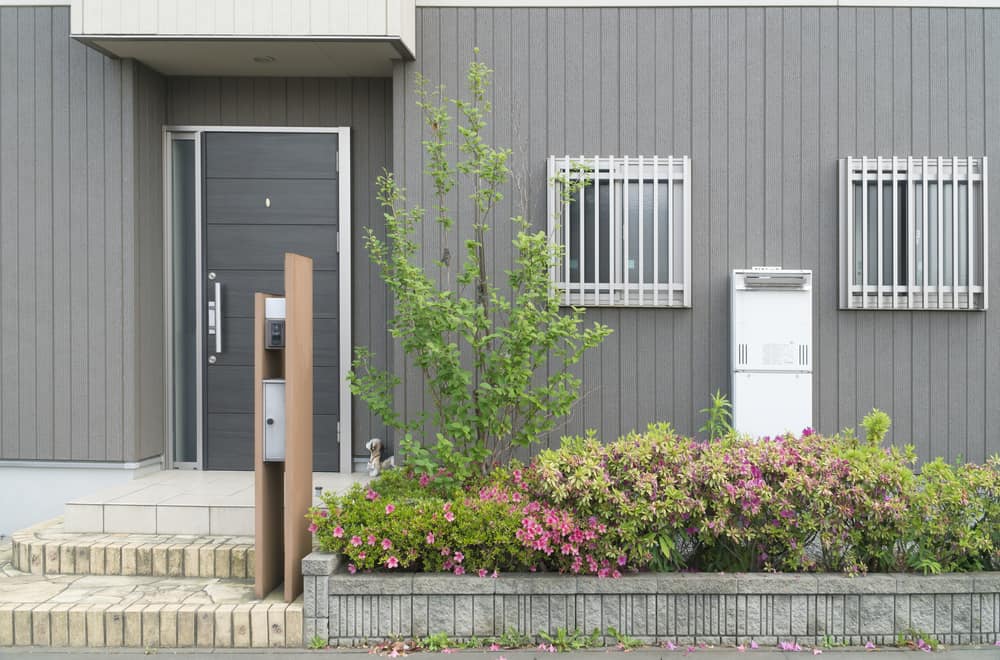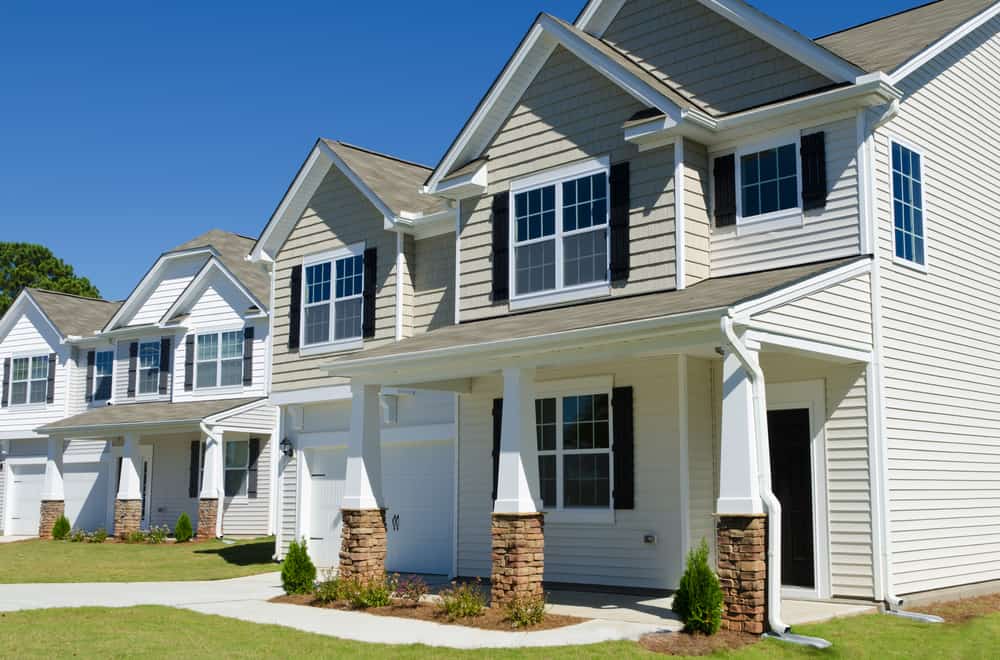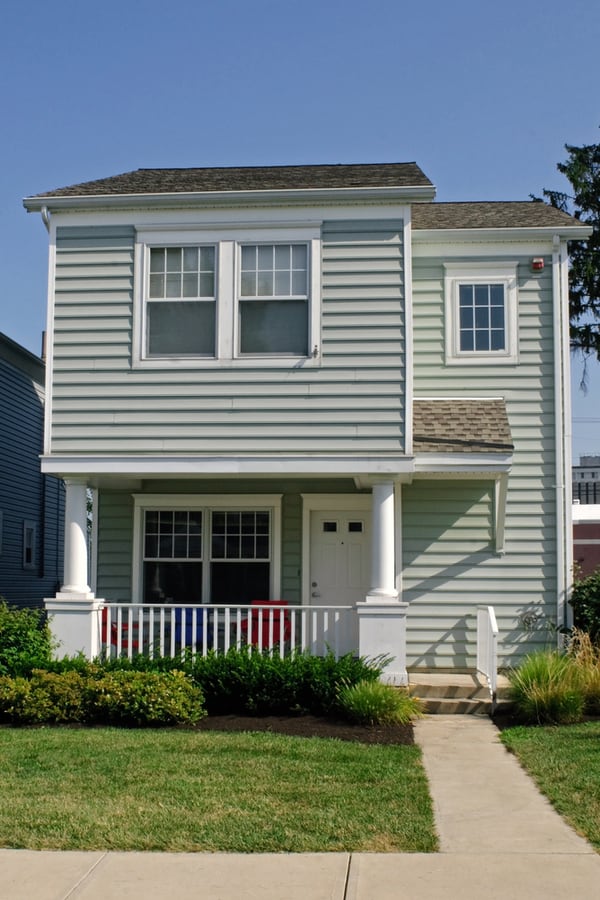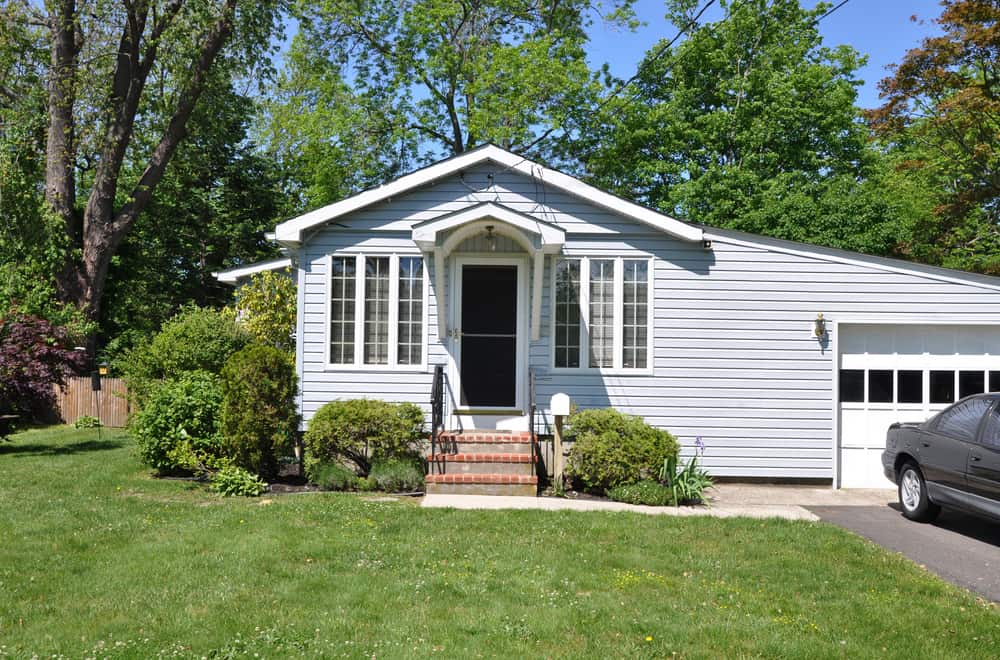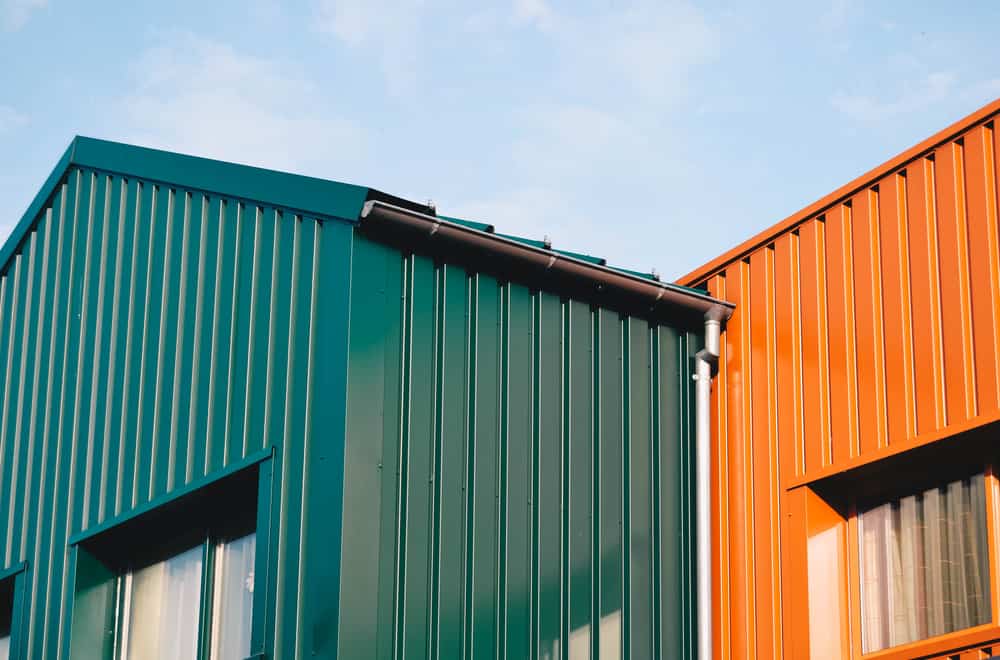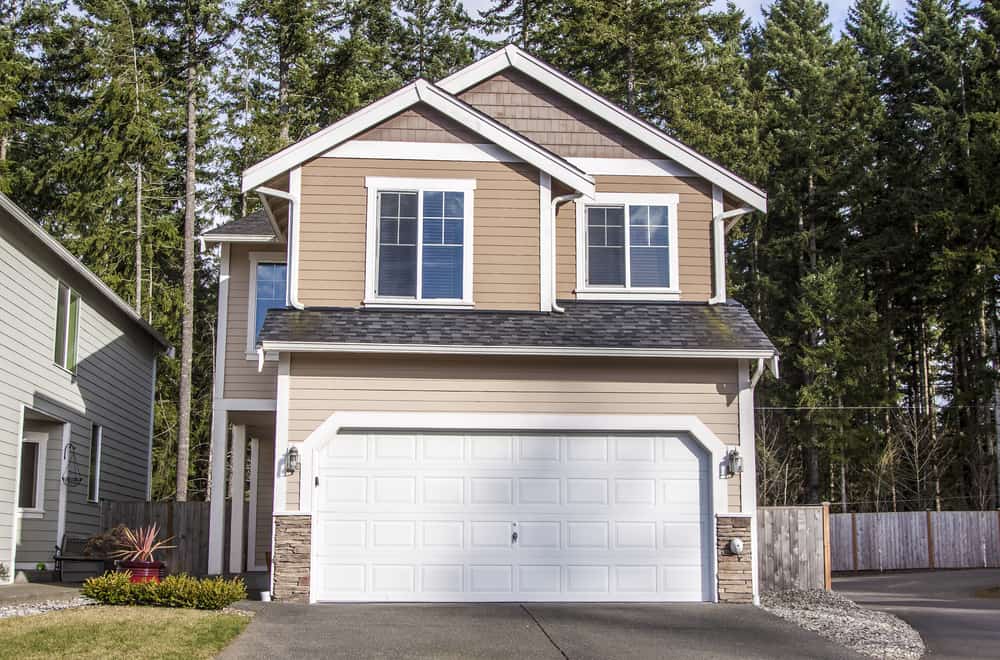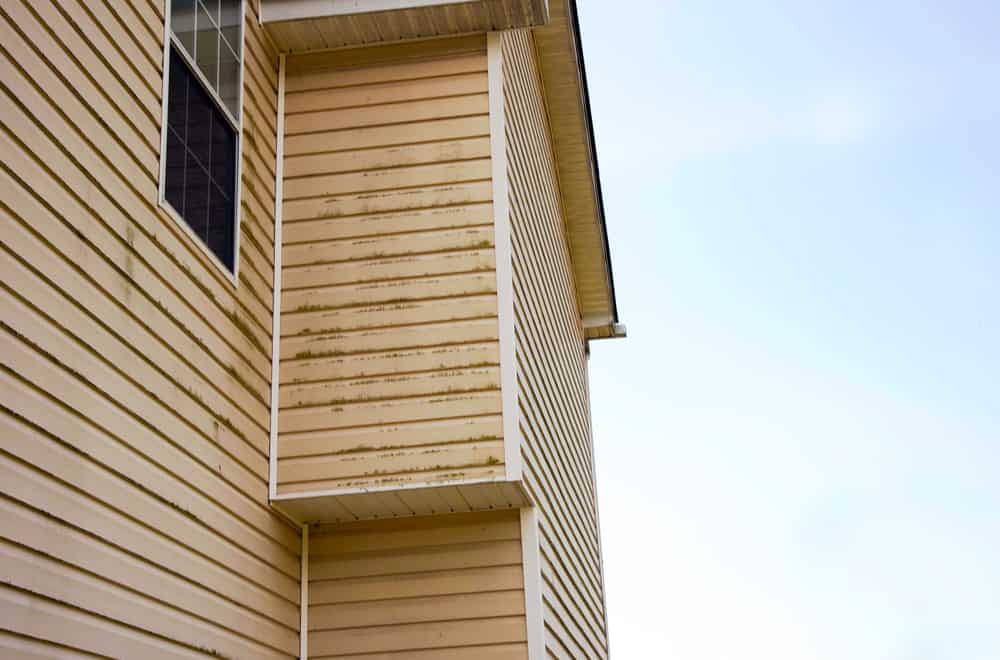A house siding has several purposes besides contributing to your home’s aesthetics. It also protects exterior walls from moisture, pests, and weather conditions. Therefore, choosing the perfect siding material is a vital decision.
Aluminum and vinyl are popular choices since they are both affordable and long-lasting materials. Still, some homeowners choose to replace one with another for various reasons. If you hesitate between aluminum vs. vinyl siding, you will discover they both have advantages and downsides, so you should consider them carefully.
Table of Contents
Aluminum Siding
Although there were houses with aluminum sidings in the 1880s, Francis Hoess invented and patented the modern version in 1937.
This soft and lightweight material has proven to be practical for designing various siding panels. In the following decades, many residential buildings got aluminum siding instead of the previous wooden one.
Plus, many homeowners accepted this kind of siding because of low prices and a quick installation process. Nowadays, you can find a few aluminum siding types available on the market, depending on the material gauge.
Vinyl Siding
Aluminum siding’s popularity somewhat dropped in the 1970s, when manufacturers introduced vinyl sidings to the market. Vinyl was even cheaper and came in a wider range of colors than aluminum.
Nowadays, many houses in the US and Canada have this siding type. Unfortunately, this plastic material contains polyvinyl chloride (PVC) that makes it undesirable for many reasons.
Aluminum and Vinyl Siding Features
Unlike wood, both aluminum and vinyl are artificially manufactured materials, but that is not the only feature they share. There are several things you can count on, no matter whether you choose one or another option for your home:
Durability
The main factor influencing siding durability is its thickness. Both vinyl and aluminum come in different gauges. The thicker material you purchase, the longer your siding lasts.
That means you won’t need to replace a top-quality siding for decades, regardless of choosing aluminum or vinyl. In general, you can expect that aluminum siding lasts over 35 years.
On the other hand, many vinyl manufacturers offer a lifetime warranty on their sidings. Of course, time will leave its marks on both siding types, but differently.
An aluminum siding is more prone to scratching, while vinyl will crack over time. For instance, aluminum siding is more likely to remain intact on a heavy impact, unlike the vinyl model.
Maintenance
Another thing aluminum and vinyl have in common is effortless maintenance. Once you complete the installation, there is not much to do. In most cases, the siding will stain over time. Besides, excessive moisture will probably result in mold growth, while living near the sea can lead to corrosion between panels.
You can clean your facade once or twice a year to remove dust, dirt, and accumulated debris. In most cases, using a garden hose will be enough, and you probably won’t need any cleaning products.
Always avoid using strong chemicals that can ruin the protective finish on the facade surface. Instead, pick a mild liquid soap or a homemade vinegar solution to finish the job when necessary.
Always use a soft dry cloth afterward to wipe the surface. At the same time, you can inspect it and check for any changes. Another option is to use a pressure washer to clean your siding more thoroughly.
Energy saving
A well-installed siding increases your house’s energy efficiency and lowers your bills by keeping the inside temperature stable.
Experts use R-value to describe a material insulation capability (thermal resistance). The higher R-value a material has, the better is its energy efficiency.
Both aluminum and vinyl sidings have a 0.61 R-value, which makes them excellent insulators. Plus, you can invest in additional insulated siding, both for aluminum and vinyl.
Remember that the insulated siding costs more than the non-insulated one, regardless of the material you choose. However, it raises your house R-value for 2 to 5, depending on the panels’ thickness.
Pest resistance
One thing you don’t have to worry about with aluminum and vinyl sidings is pest resistance. Termites, wasps, and woodpeckers can damage the wood siding, but that won’t happen with aluminum and vinyl materials.
Plus, modern vinyl sidings prevent insect infestation under the panels, which wasn’t the case in the past. In the worst-case scenario, some spiders may try to nest in the corners under the roof, but you can quickly solve that problem with a few strokes of the broom.
Affordability
Although there is some difference in aluminum and vinyl prices, it is not significant enough for a deal-breaker. The siding price depends on the material thickness and quality. Plus, any protective layers will raise the final bill.
Generally, you can find vinyl siding for $2 to $10 per 1 sq ft (0.09 m2). Aluminum siding ranges between $3 to $6.
However, the investment will depend on your house size. If you have a limited budget, you will probably go for a more affordable option, no matter how slight the difference is.
Keep in mind that there is also a $12 vinyl siding and $10 aluminum. You can also combine materials and get vinyl-wrapped aluminum siding, but this option is more expensive than any of them.
Aluminum Siding Advantages
Vinyl siding failed to suppress the popularity of aluminum when it appeared on the market, despite its attractive price. The reasons for this are some aluminum advantages, such as:
Fire resistance
Aluminum doesn’t burn or melt in case of fire. It is not entirely fire-resistant like some other materials, but it won’t ignite at all. That makes it a perfect material for fire-safe siding so much that you can get an insurance discount for a house containing it.
Resistance to extreme temperatures
Extreme weather conditions won’t change aluminum siding, unlike the vinyl ones. It will become neither brittle during hot days nor cracks at low temperatures.
Eco-friendly
Aluminum belongs to so-called green materials. It means you can recycle it over and over again. Plus, it is a versatile metal you can use for another purpose once you take it off your house.
Repainting and repairing
One of the crucial aluminum advantages is the possibility to repaint and repair it quickly. It allows you to change your siding color whenever you want. You can also cut damaged and scratched parts and replace them with new pieces.
However, don’t forget about caulking once you place a new aluminum. Use a silicone compound on joints to keep your siding waterproof and energy-efficient.
Aluminum Siding Disadvantages
Unfortunately, aluminum has its downsides that some homeowners can’t ignore. If you agree with them, you will probably choose vinyl siding instead.
Denting
Aluminum is more prone to denting and scratches than vinyl. Although you can repair the small damaged area, replacing the whole siding is costly. For example, a strong storm can quickly destroy the siding surface, thus forcing you to invest a large sum in replacing it.
Fading
Painted aluminum will fade on the sun over the years. If you see any oxidation, you will need to prepare the surface before repainting. That process takes time and effort that many rather avoid.
Vinyl Siding Advantages
Modern vinyl has several advantages over aluminum, which makes vinyl siding more desirable to homeowners.
Color and style range
Nowadays, manufacturers offer a wide range of vinyl siding colors and styles. You can get almost any shade you want or pick a vinyl that imitates wood or cedar shingles. Plus, there are numerous textures and patterns available.
Easy installation
If you have any skills in DIY projects, mounting vinyl siding on exterior walls will be a piece of cake. Most vinyl sidings come with predrilled holes, so you can quickly fasten them to the house. Plus, you will save money by avoiding the labor costs.
Vinyl Siding Disadvantages
There are several things to think about before making a long-term commitment to vinyl siding. Some of its major red flags are:
Tendency to water damage
Although vinyl has some water resistance levels, it is not an entirely waterproof material. If you live in an area with heavy rains, you will risk water retention between vinyl siding and walls. Unfortunately, that can lead to mold growth.
Installing building paper behind the siding can prevent this problem. However, that requires additional contractor work and more expenses.
Flammability and heat-sensitivity
Vinyl is a material highly sensitive to high temperatures and fire. Even placing a grill too close to your house can result in cracks and deformation.
Keep in mind that dark shade vinyl absorbs more heat than a lighted-color one so that it can deteriorate faster. Plus, vinyl burns and melts quickly. In a case of fire, its fumes can release toxic gas, leading to people’s suffocation.
Non-recyclability
Contrary to aluminum, you can’t recycle vinyl siding. If you ever decide to replace it, your only option is to throw this material out. That is one of the top reasons many environmentally conscious homeowners opt-out for aluminum rather than vinyl siding.
Summary
Aluminum and vinyl siding share some qualities since they are both long-lasting and easily maintained materials. Still, some homeowners prefer one over the other. As you can guess, both of them have their pros and cons, so your decision will depend solely on your desires and priorities.
